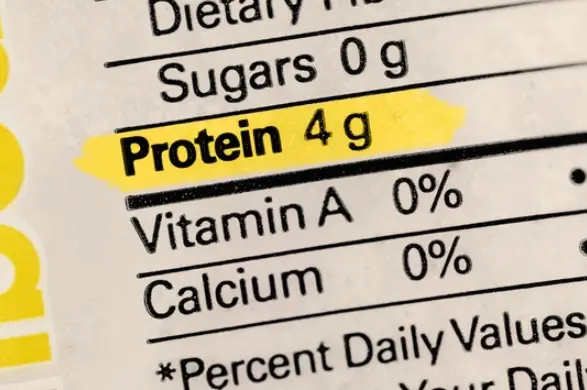Did you know that protein is an essential macronutrient that plays a vital role in our overall health?
While many people associate protein primarily with meat, there’s a growing interest in plant-based diets.
As a result, the protein content of vegetables has come under the spotlight.
In this comprehensive guide, we will explore the protein content of various vegetables and provide you with a handy chart to help you make informed dietary choices.
Protein and Its Importance
Protein is made up of amino acids, which are the building blocks of the human body.
These amino acids are responsible for various functions, including tissue repair, enzyme production, and immune system support.
Proteins are typically categorized into two types: complete and incomplete.
Complete proteins contain all essential amino acids in sufficient quantities, while incomplete proteins lack one or more essential amino acids.
Animal products like meat, poultry, and dairy are considered complete protein sources, while most vegetables fall into the category of incomplete proteins.
Protein for Every Diet
Whether you are a vegetarian, vegan, or simply looking to incorporate more plant-based options into your diet, the protein content of vegetables provides a wealth of options.
It’s important to note that while vegetables can be a significant protein source, they may not contain as much protein per serving as animal-based foods.
Therefore, it’s essential to include a variety of protein-rich vegetables in your diet and combine them with other plant-based protein sources to ensure you meet your nutritional needs.
The Protein Content of Common Vegetables

Protein Content of Vegetables Chart
Spinach
Spinach is a nutrient-rich vegetable that provides various essential vitamins and minerals. When it comes to protein, it contains approximately 2.9 grams of protein per 100 grams. While it may not be a powerhouse compared to some other vegetables, it’s a valuable addition to a well-balanced diet.
Broccoli
Broccoli is another nutrient-dense vegetable that offers numerous health benefits. In terms of protein content, it contains around 2.8 grams of protein per 100 grams. While not as protein-rich as some other options, it’s a fantastic source of fiber and various vitamins.
Brussels Sprouts
Brussels sprouts are known for their distinctive taste and nutritional value. These tiny cabbages contain approximately 3.4 grams of protein per 100 grams, making them a good choice for those seeking protein from vegetables.
Kale
Kale is a popular leafy green with a significant protein content. It boasts around 2.9 grams of protein per 100 grams and is also packed with vitamins, particularly vitamin K.
Cauliflower
Cauliflower is a versatile vegetable that’s low in calories and offers around 1.9 grams of protein per 100 grams. It’s an excellent choice for those looking to reduce their calorie intake while maintaining protein intake.
Peas
Peas are a legume that provides a substantial amount of protein. They contain approximately 5.4 grams of protein per 100 grams. They’re also rich in fiber and various vitamins.
Lentils
Lentils are one of the best plant-based sources of protein, containing about 9 grams of protein per 100 grams. They are also a great source of dietary fiber, making them a nutritious addition to any diet.
Chickpeas
Chickpeas, also known as garbanzo beans, are another protein-packed legume. They contain approximately 8.9 grams of protein per 100 grams and are frequently used in various dishes, such as hummus.
Black Beans
Black beans are a staple in many cuisines and contain approximately 8.9 grams of protein per 100 grams. They are a versatile ingredient that can be used in soups, salads, and burritos.
Edamame
Edamame are young soybeans that offer an impressive protein content of around 11 grams per 100 grams. They are often served as a snack or appetizer.

Protein Content of Vegetables Chart
To make it easier to compare the protein content of various vegetables, here’s a chart that lists some common vegetables and their protein content per 100 grams:
| Vegetable | Protein Content (per 100 grams) |
|---|---|
| Spinach | 2.9 |
| Broccoli | 2.8 |
| Brussels Sprouts | 3.4 |
| Kale | 3.3 |
| Peas | 5.4 |
| Lentils | 9.0 |
| Chickpeas (Garbanzo) | 8.9 |
| Black Beans | 7.6 |
| Edamame | 11.9 |
| Tofu | 8.2 |
| Quinoa | 4.1 |
| Spinach | 2.9 |
| Cauliflower | 1.9 |
| Asparagus | 2.4 |
| Sweet Potatoes | 1.6 |
| Green Peppers | 0.9 |
| Avocado | 2.0 |
| Mushrooms | 3.1 |
Tips for Maximizing Plant-Based Protein Intake:
- Combine complementary proteins: To ensure you’re getting all essential amino acids, combine different plant-based protein sources. For example, pair rice with beans or hummus with whole wheat pita.
- Explore diverse recipes: Experiment with various cuisines and recipes to keep your diet interesting and nutritionally balanced. Try cooking tofu in different styles or incorporating beans into salads, soups, and stews.
- Pay attention to portion sizes: While plant-based proteins are rich in nutrients, portion control is key. Be mindful of your serving sizes to maintain a balanced diet.
While vegetables may not be the primary source of protein for many individuals, they still play a crucial role in a balanced diet.
Incorporating a variety of protein-rich vegetables into your meals can contribute to your overall protein intake, especially if you follow a plant-based diet.
The chart provided in this guide can serve as a quick reference to help you make informed dietary choices.
Remember that protein is just one piece of the nutritional puzzle, and a diverse diet that includes a range of vegetables will ensure you receive all the essential nutrients your body needs for optimal health.




